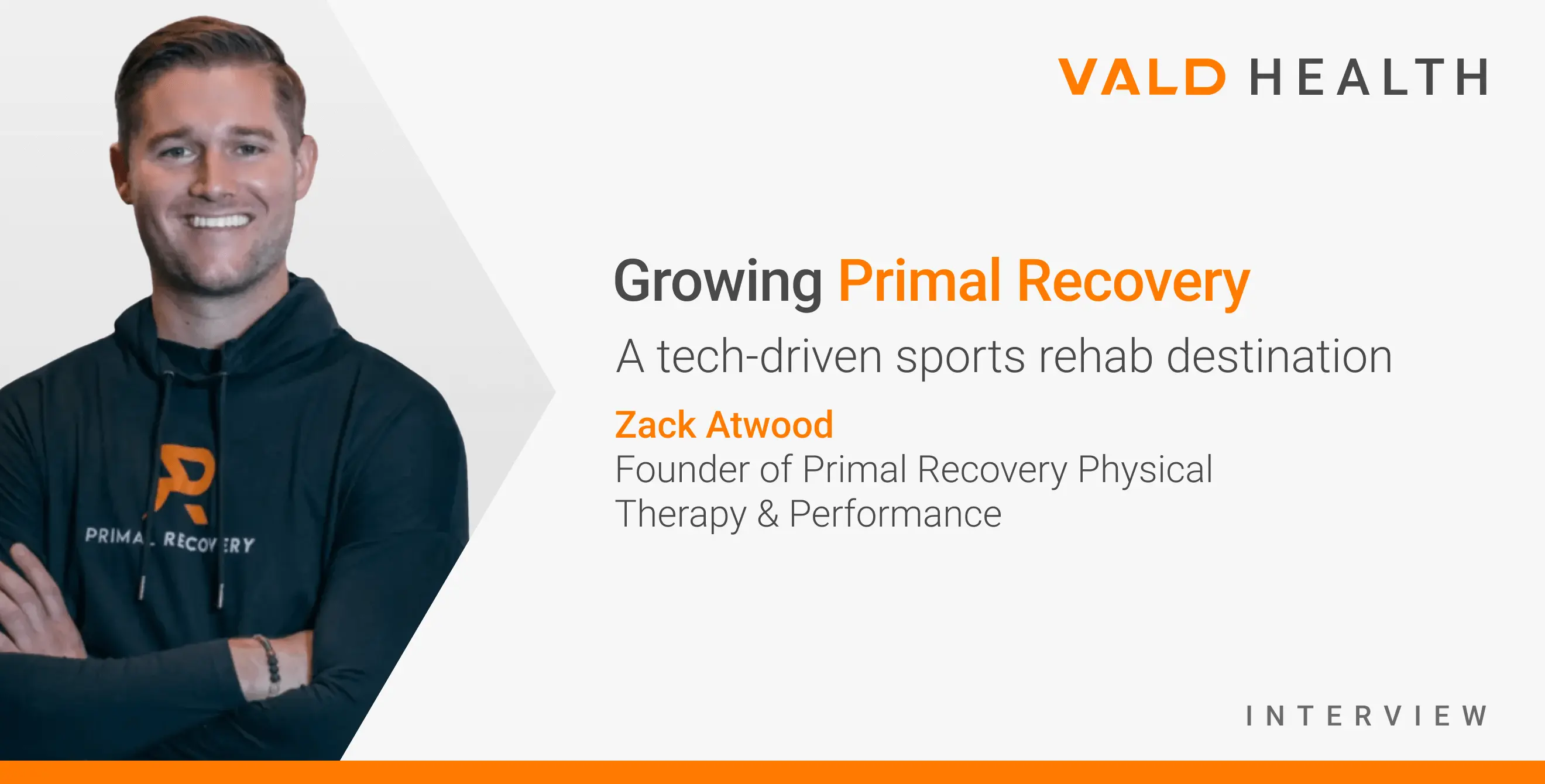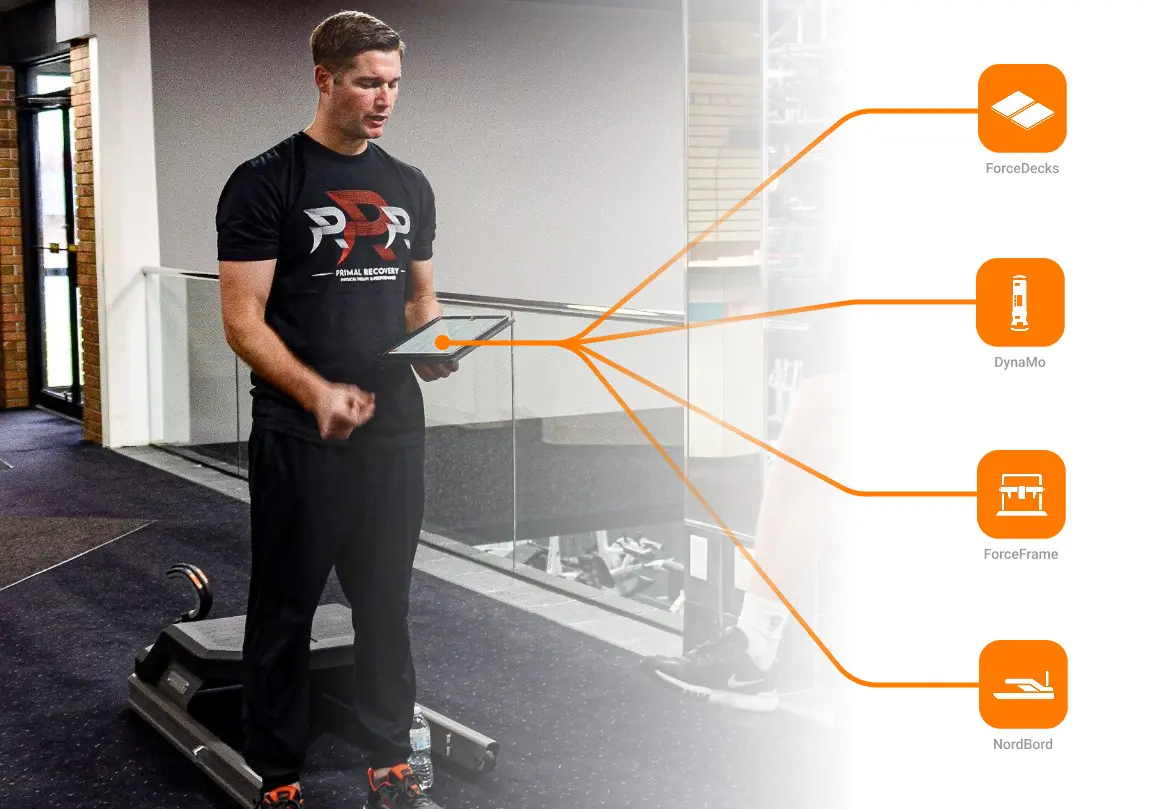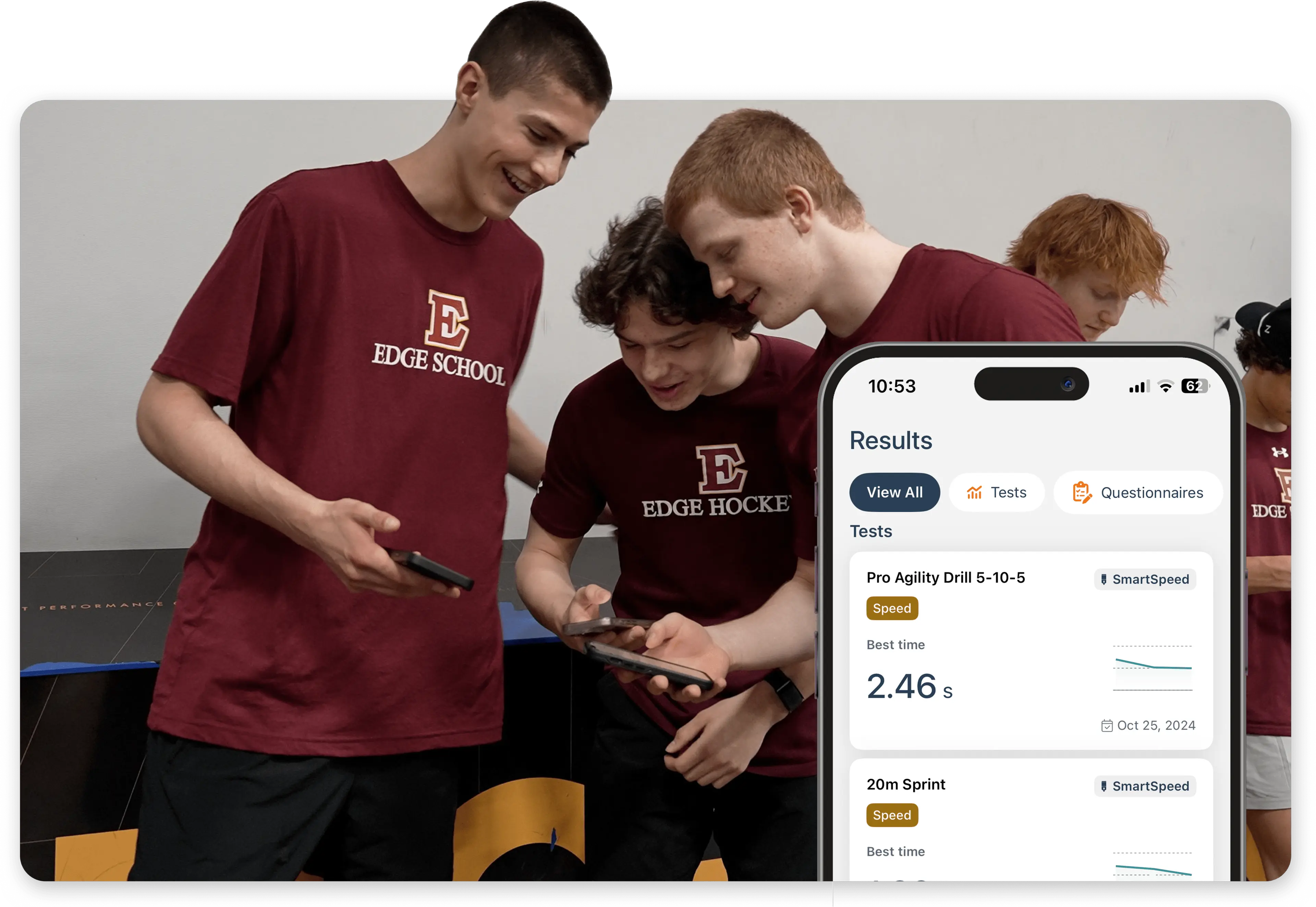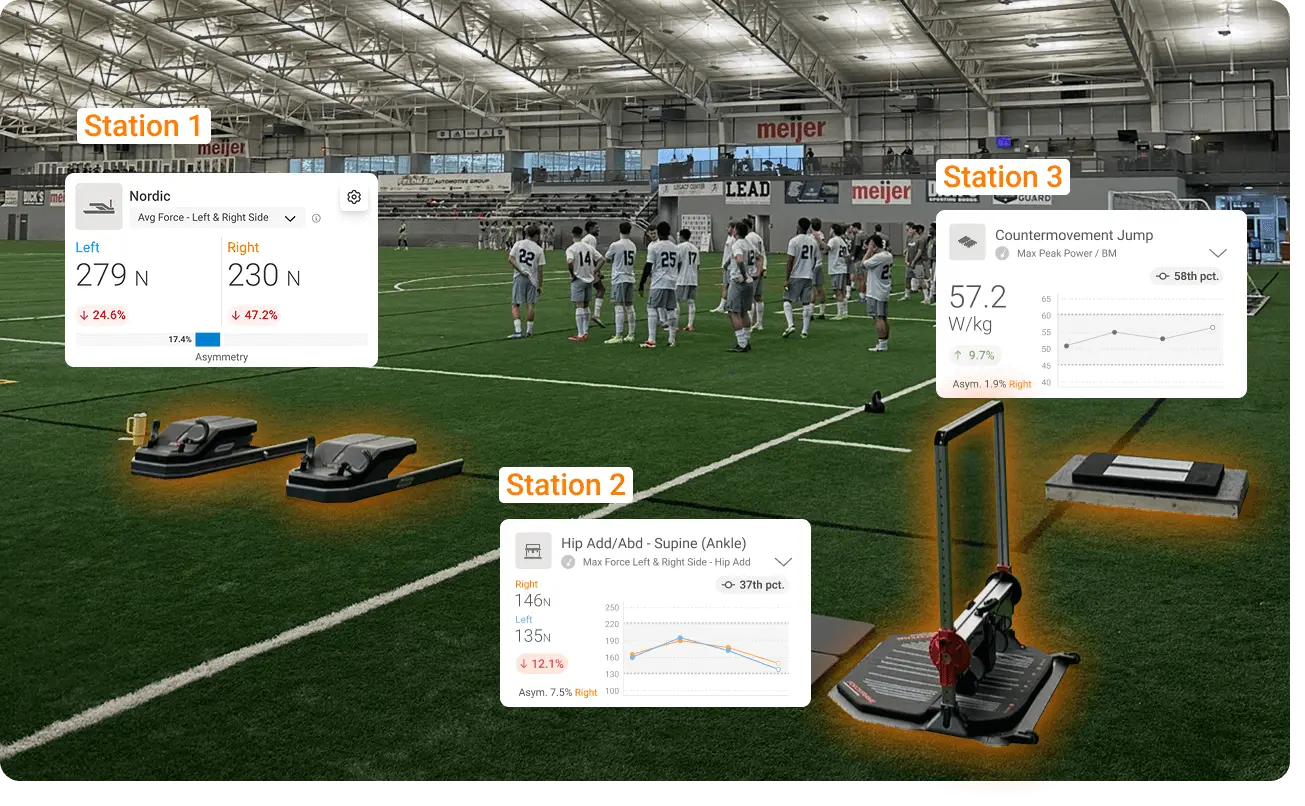Growing Primal Recovery: A tech-driven sports rehab destination
Available in:
EN
Zack Atwood, PT, DPT, is the founder of Primal Recovery Physical Therapy & Performance, based in metro Detroit.
In this Q&A, he shares how VALD technology has helped him build a data-driven clinic, deliver better outcomes for anterior cruciate ligament (ACL) rehab and grow a business recognized as a top sports rehab destination.
What makes technology valuable to your practice?
Technology expands what we can offer. Objective assessment makes my job easier and more effective, but it also opens doors we couldn’t access otherwise.
We’ve run one pro soccer combine, tested seven college teams and assessed more than 200 youth and high school athletes this year alone. That’s led to over 500 new leads – something that wouldn’t be possible without a streamlined testing process.
[Technology and combine testing has] led to over 500 new leads – something that wouldn’t be possible without a streamlined testing process.
We also bring the same technology into the classroom. As an adjunct faculty member at Wayne State University, I use DynaMo, ForceDecks, ForceFrame and NordBord to teach physical therapy students what modern assessment should look like. It helps raise the standard and positions our clinic as a leader in the region.
Objective assessment makes my job easier and more effective, but it also opens doors we couldn’t access otherwise.

Zack and his team using VALD technology in a variety of settings.
How did your journey into private practice begin?
After a few years in outpatient sports rehab, I wanted to build something of my own. I had a strong interest in ACL rehab and enough clinical experience to know what worked.
In July 2023, I launched Primal Recovery Physical Therapy & Performance as a niche clinic focused on high-level ACL rehab and performance. Now, almost two years in, we have two therapists with full caseloads – about 90% of which are ACL clients.
What role has VALD technology played in your growth?
I first saw VALD products during my final clinical rotation at Champion Physical Therapy and Performance in Boston. After being surrounded by high-caliber clinicians and seeing how seamlessly technology was embedded within their processes, I knew those same tools would be a massive separator for the clinic l would eventually open.
After [seeing] high-caliber clinicians’ [process with technology], I knew those same tools would be a massive separator for [my future clinic].
Once our ACL volume increased, VALD technology became a non-negotiable. ForceDecks, ForceFrame and NordBord help us standardize testing, scale our results and back our decisions with objective data. Similarly, the high load capacity and versatility of DynaMo Max have been a great teaching tool for the students I work with.

Zack integrates multiple technologies into a single session to best inform his rehab plans.
By making large-scale group testing and combine testing a core offering, we have developed strong ties and established multiple partnerships in the community. At first, we started by offering free group testing sessions as a way to showcase value, and over time, this has led to partnerships with schools, sports clubs and even a professional sports organization.
…[large group testing] has led to partnerships with multiple schools, sports clubs and even a professional sports organization.
I’ve found incredible value in using technology as an educational piece when working as an adjunct faculty member at Wayne State. With students, we use technology to simplify the learning curve. They’re able to quickly understand setup and execution, which helps reinforce why objective testing matters in clinical practice.
How did you make the jump from group testing to entire combines?
It came down to refining our process. Early on, we tried to collect and analyze too many assessments, which slowed us down and gave us less reward than we were expecting.
Now, we focus on efficiency and effectiveness. At our last combine, we tested 110 athletes in under two hours. Tools like MoveHealth help us follow up quickly, share results and connect leads to the right service.

Athletes comparing results after combine testing in the MoveHealth app.
Most importantly, we simplified our approach by focusing our combine testing on four key areas:
| Quality | Test | Metrics | Systems |
|---|---|---|---|
| Hamstring Strength | Nordic hamstring curl | Peak force asymmetry | NordBord |
| Jump Performance | Countermovement jump (CMJ) | Jump height Peak power / BM | ForceDecks |
| Hip Strength | Hip adduction and abduction 60° | Peak force asymmetry | ForceFrame |
| Change of Direction Performance | 5-10-5 | Time to completion | SmartSpeed |

A large combine testing event with sample tiles of athlete performance reports from VALD Hub.
These metrics are simple, efficient and effective for athlete profiling, which makes our process as practitioners infinitely easier to manage when working with over 100 athletes on a given day.
For one-on-one ACL rehab, we go deeper. For athletes returning to sport after an ACL injury, we often include more assessments such as drop jumps, repeated hop tests, isometric mid-thigh pulls (IMTPs) and Run-Specific Isometrics (RSIT).
Here are some of the common metrics we track:
| Test | Quality | Metrics |
|---|---|---|
| CMJ |
|
|
| Single Leg Jump |
|
|
| Drop Jump and Hop Tests |
|
|
| IMTP |
|
|
| RSIT |
|
|
This helps us identify specific deficits, guide progressions and improve return-to-play decisions.
What business impact have you seen from combine testing?
About 10% of the athletes we test become clients. With the volume we’re testing, that’s translated to over 50 new clients in the last 4 to 5 months.
With the volume we’re testing, [technology has helped us get] over 50 new clients in the last 4 to 5 months.
That alone has paid off our investment in technology and opened the door to bigger opportunities. We’re now working with three colleges for preseason and off-season testing based on one event, which has significantly boosted the ROI we have gotten from implementing this technology.
What is next for your clinic?
We’re continuing to sharpen our skills – how we test, how we program and how we communicate data to athletes, coaches and parents. VALD’s Practitioner’s Guides have helped lay the foundation. Now, we’re focused on translating metrics into action.

We’re also building The ACL Institute – a free online platform to support continuing education for physical therapists. Our goal is to bring together clinicians, coaches and students who want to raise the bar for ACL rehab both in the clinic and in the classroom.
If you would like to know more about how to integrate VALD’s human measurement technology into your organization to streamline combine testing, enhance ACL rehab and deliver data-driven outcomes, please reach out here.
